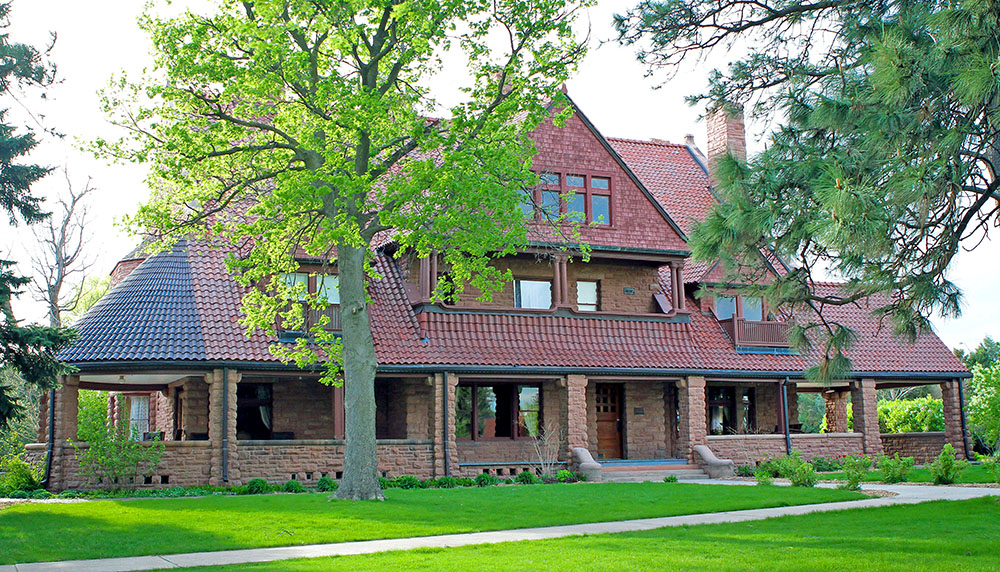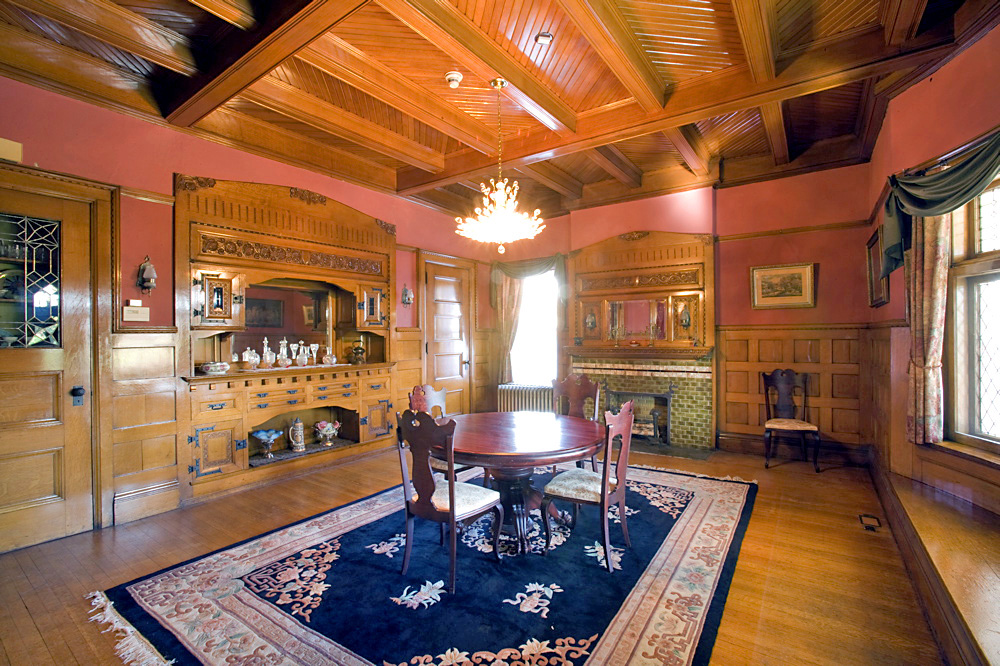By SARA GIBONEY
UNK Communications
KEARNEY – The G.W. Frank Museum of History and Culture is the new name of the historic Frank House located on the University of Nebraska at Kearney campus.
“The idea behind this change is to create an institution capable of telling broader stories and providing more relevant experiences for a wider range of visitors,” said Frank House Director Will Stoutamire.
The name change is the first step in a rebranding of the museum. The rebranding will unfold through new exhibits and programs that will launch during the next year. The museum will eventually feature digital interactive exhibits, augmented reality and online learning, bringing this historic home into the modern era.
 An advantage of going digital, Stoutamire said, is having the ability to update the exhibits so visitors will likely learn something new on each visit. “Ultimately, the hope is that this expansion will enable us to create a multi-layered experience that is worth coming back to time and again.”
An advantage of going digital, Stoutamire said, is having the ability to update the exhibits so visitors will likely learn something new on each visit. “Ultimately, the hope is that this expansion will enable us to create a multi-layered experience that is worth coming back to time and again.”
New exhibits will feature the tuberculosis hospital that is now the West Center building on campus, Victorian decorative art and rotating exhibits on Kearney’s history.
Restorations must be completed before the construction of the new exhibits can begin. The museum will undergo lead paint abatement, ceiling repairs, woodwork refinishing, painting and repairing cracks and holes.
“We hope that this will allow the museum to step beyond the confines that are placed upon historic house museums that are typically so narrowly focused, and that this will allow the Frank House to become a more vibrant and diverse institution,” Stoutamire said.
The G.W. Frank Museum of History and Culture was built as the private residence of George Frank, Sr. and his wife, Phoebe, in 1886. It was one of the first houses with electricity on the Great Plains and featured steam radiators and indoor plumbing.
The home was placed on the National Register of Historic Places in 1973. The museum saw a record 5,985 visitors in 2015. The Frank House is located on the west end of campus and offers tours from 2-5 p.m. Monday through Friday and noon-5 p.m. Saturdays.
Planned changes to the G.W. Frank Museum of History and Culture
- A permanent exhibit on the first floor tells the story of 1890s Kearney (the “boom” era) through the lens of the Franks and their domestic servants. Guests will be able to take a tour with a guide, but will also have the opportunity to learn about this period through digital and physical interactive exhibits, augmented reality exhibit labels and short documentary excerpts.
- A permanent exhibit on the second floor that moves visitors into 20th-century Kearney, which looks very different from the Kearney of the Franks and very similar to the Kearney of today. The focus will be on the tuberculosis hospital’s history, but the display will cast a larger lens on the changes going on in the community and throughout central Nebraska during that time.
- A rotating exhibit of Victorian decorative art.
- Traveling exhibits and other programs that explore aspects of Kearney’s history not covered by the permanent display. The next planned exhibit is “Nebraska Women at Work,” which details how women used their experiences at work (as domestic servants, nurses, etc.) to challenge discriminatory gender practices and advocate for greater equality and, ultimately, the vote.
- Opening up the “behind-the-scenes” areas, allowing guided visitors to explore the museum’s basement and third floor (the former servants quarters). These areas are currently closed to the public.
-30-
Source: Will Stoutamire, 308.865.8284, stoutamirewf@unk.edu
Writer: Sara Giboney, 308.865.8529, giboneys2@unk.edu

